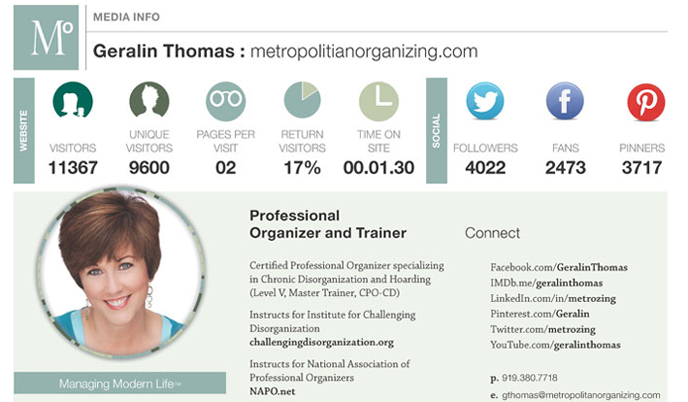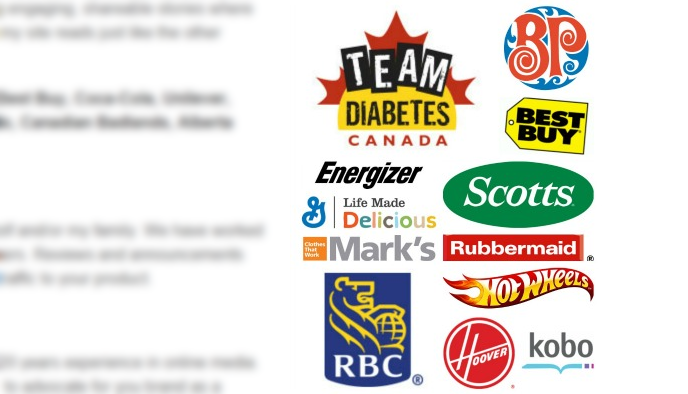One of the ways you can choose to monetize your blog is through direct advertising. This is when you partner or collaborate with a company directly, oftentimes in the form of sponsored content or native advertising. It could involve sponsored posts, brand ambassadorship, sponsored reviews, social media sharing or any number of other possible promotional methods. You could put together a great tutorial or DIY video, for example.
And while you may experience the good fortune of having a company come to you to seek out advertising opportunities, more often than not you’ll have to be the one approaching them unless your blog is already a hot and popular commodity in your niche. You’ll need to pitch them with your ideas and you’ll need to convince them that their marketing dollars are well spent with you.
In addition to the actual pitch itself, the company will want to know more about your blog and why they should advertise there. This is when having a media kit can come in handy. A media kit is similar in scope to an advertising page, but it may take on a slightly different form. It might be a multi-page PDF, for example. When putting together your media kit, there are several elements that you should not neglect to include.
Who You Are
The prospective advertiser probably doesn’t know who you are and why you matter, so you’ve got to tell them in just a few short sentences. Keep it brief and punchy. The “about” section should ideally include a little bit about yourself as a blogger, but more importantly, a little bit more about the blog itself. A headshot and logo are well-served here too.
What You Offer
Can you put together high quality video? Are you more inclined to use product placement in your Instagram pictures? What about sponsored content or infographics? Are banner ads your primary form of advertising?
Your media kit does not necessarily need to be comprehensive with every form of advertising and partnership that you are prepared to offer, but the advertiser should know what “products” you are making available to them.
Social Media Stats

The power of social media simply cannot be denied, regardless of the vertical that your blog approaches. Companies will want to know about the kind of reach that you get. The numbers don’t have to be exact, but they should be accurate to at least the nearest hundred or thousand. The most important ones to include here are Twitter and Facebook, but don’t be afraid to pimp your Instagram, YouTube and Pinterest followers too.
Traffic Numbers
Unsurprisingly, the other set of numbers that advertisers will want to know will have to do with the traffic on your site. How many monthly unique visitors do you have on average? How many page views? What’s the typical time on site? It’s not just about the actual raw numbers here either, because you should also endeavor to include some basic demographic information. Are your readers mostly male? What’s the age range? Where are they located? What are they interested in?
Previous Partnerships
People are lemmings. Advertisers are no different. If they see that you have worked with other companies in the past, particularly big name brands, they’re much more likely to want to work with you too. It’s a snowball effect. The easiest way to highlight your previous partnerships is with a simple collage of logos.

Testimonials and Success Stories
Sometimes it’s not enough to say that you partnered up with Coca-Cola on a campaign. You want the ad executive from Coca-Cola to say that working with you was a terrific experience and that you really over-delivered with your spot-on brand messaging. Testimonials are fantastic. You might also show how XYZ brand gained 5,000 Twitter followers after partnering with you or how ABC saw its engagement increase by 20%.
Contact Information
Of course, none of this information would matter if the advertiser doesn’t know how to get in touch with you. An email address is the absolute bare minimum and is the most likely form of communication you’ll get, at least for first contact. Including a phone number or Skype ID isn’t such a bad idea either.
It may be true that not every blog needs a media kit and you might feel like your numbers wouldn’t play up very well in that format. On the other hand, if you do have a superstar media kit and you present yourself professionally with your pitch, you have a much better shot at landing that sponsorship than an equivalent blogger without the media kit.
